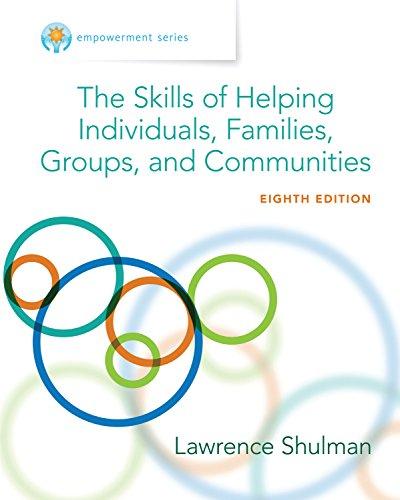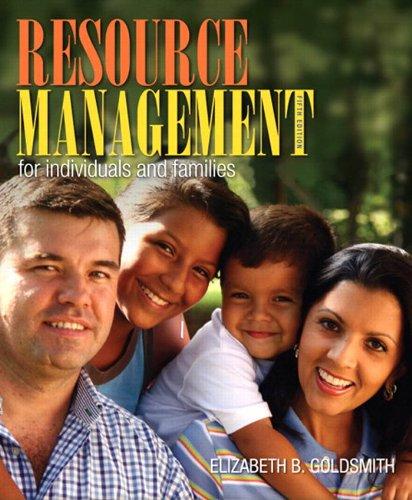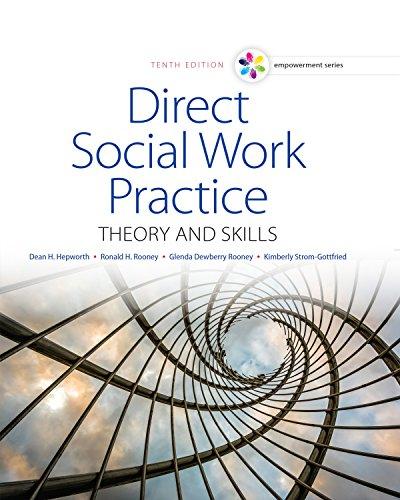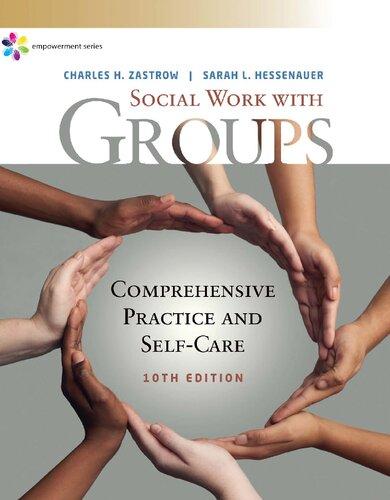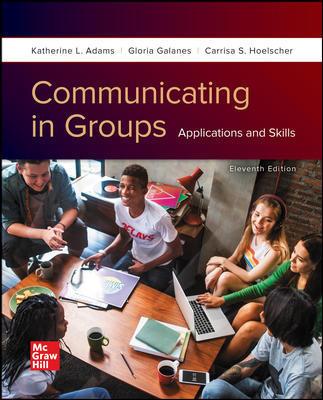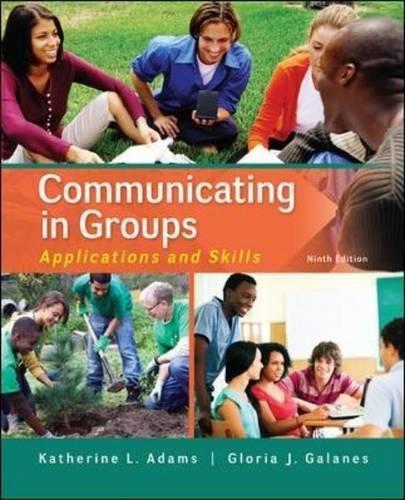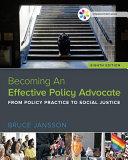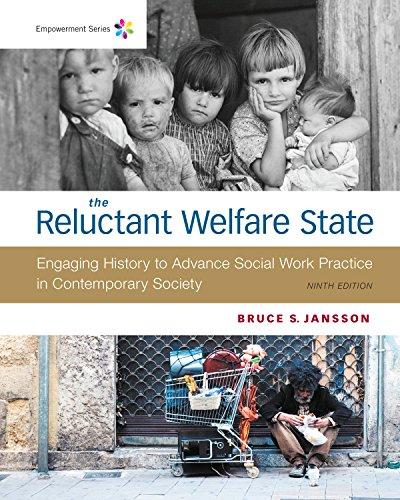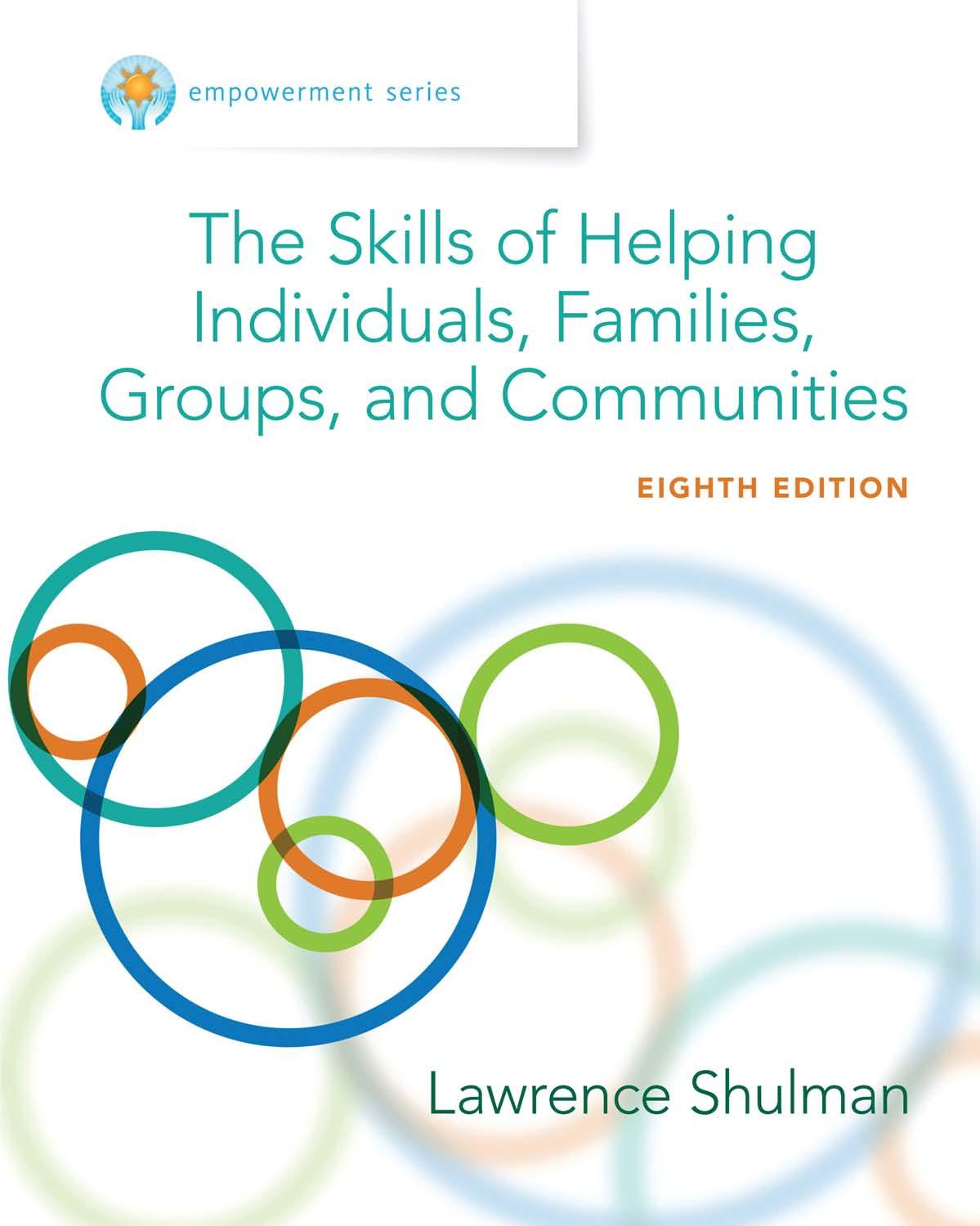Empowerment Series: The Skills of Helping Individuals, Families, Groups, and Communities, Enhanced 8th Edition, (Ebook PDF)
Visit to download the full and correct content document: https://ebookmass.com/product/empowerment-series-the-skills-of-helping-individualsfamilies-groups-and-communities-enhanced-8th-edition-ebook-pdf/
More products digital (pdf, epub, mobi) instant download maybe you interests ...
Resource Management for Individuals and Families 5th Edition, (Ebook PDF)
https://ebookmass.com/product/resource-management-forindividuals-and-families-5th-edition-ebook-pdf/
Empowerment Series: Direct Social Work Practice: Theory and Skills 10th Edition, (Ebook PDF)
https://ebookmass.com/product/empowerment-series-direct-socialwork-practice-theory-and-skills-10th-edition-ebook-pdf/
Empowerment Series: Social Work with Groups: Comprehensive Practice and Self-Care 10th Edition Charles Zastrow
https://ebookmass.com/product/empowerment-series-social-workwith-groups-comprehensive-practice-and-self-care-10th-editioncharles-zastrow/
(eBook PDF) Communicating in Groups: Applications and Skills 11th Edition
https://ebookmass.com/product/ebook-pdf-communicating-in-groupsapplications-and-skills-11th-edition/
Grief and Loss: Theories and Skills for the Helping Professions 2nd Edition, (Ebook PDF)
https://ebookmass.com/product/grief-and-loss-theories-and-skillsfor-the-helping-professions-2nd-edition-ebook-pdf/
Communicating in Groups: Applications and Skills 9th Edition
https://ebookmass.com/product/communicating-in-groupsapplications-and-skills-9th-edition/
Empowerment Series: Becoming An Effective Policy Advocate 8th Edition Bruce S. Jansson
https://ebookmass.com/product/empowerment-series-becoming-aneffective-policy-advocate-8th-edition-bruce-s-jansson/
Marriages and Families: Intimacy, Diversity, and Strengths 8th Edition, (Ebook PDF)
https://ebookmass.com/product/marriages-and-families-intimacydiversity-and-strengths-8th-edition-ebook-pdf/
Empowerment Series: The Reluctant Welfare State 9th Edition – Ebook PDF Version
https://ebookmass.com/product/empowerment-series-the-reluctantwelfare-state-9th-edition-ebook-pdf-version/
PracticeModelsandEvidence-BasedPractice749 17 Evidence-BasedPracticeandAdditionalSocialWorkPracticeModels750
CHAPTER1
AnInteractionalApproachtoHelping2
ProblematicSocialWorkEncountersinEarlySessions2
TheInteractionalSocialWorkPracticeTheory4 ElementsofaPracticeTheory5 Models,Skills,andEmpiricalSupport6
TheClient–SystemInteraction7
TheMedicalModelandtheParadigmShift7 FirstInterviewWithaDepressedClient9 IntegratingAssessmentandEngagement:Behavioras Communication10
DynamicSystemsTheory:TheVISACenterExample11 Intersectionality,InterlockingOppressions,andSocialLocation16 Fanon:TheOppressorWithinandtheOppressorWithout16 UnderlyingAssumptionsintheInteractionalModel18
AssumptionofSymbiosis19
AssumptionofObstaclesintheEngagement22
AssumptionofStrengthforChange27
TheSocialWorkProfession:ABriefHistoricalPerspective29 TheRootsoftheProfession29
TheFunctionoftheSocialWorkProfession32 SocialWorkSkillandtheWorkingRelationship35 TheIntegrationofPersonalandProfessionalSelves39 ResearchFindings42 StudyDesign43
DescriptionofStudyParticipants43 StudyLimitations43
ValuesandEthicsinSocialWorkPractice44
DefinitionsofValuesandEthics44
NationalAssociationofSocialWorkersCodeofEthics45 EthicalProblemsandDilemmas46
FactorsThatMayAffectEthicalDecisionMaking47
ChapterSummary49
RelatedOnlineContentandActivities50 CompetencyNotes50
CHAPTER2
OppressionPsychology,Resilience,andSocial WorkPractice51
OppressionPsychology52
TheOppressionPsychologyofFrantzFanon52
InternalizedNegativeSelf-Images53
OppressionModelsandInter-andIntraculturalPractice54 IndicatorsofOppression54
ResilienceTheoryandResearch59
DevelopmentalPsychologyTheoryandResearch60 ResilienceandLife-SpanTheory64 CognitiveHardiness65
ImplicationsforSocialWorkPractice66
OlderPeople’sStrategiesandWaysofCoping66
ChapterSummary71
RelatedOnlineContentandActivities71 CompetencyNotes72
PARTIISocialWorkWithIndividuals73
CHAPTER3
ThePreliminaryPhaseofWork74
CommunicationsinPractice75 ObstaclestoDirectCommunication75
ExamplesofIndirectCommunicationinPractice76
PreliminaryPhase:TuningIntotheSelfandtotheClient78 TuningIntotheAuthorityTheme79
TheImpactofDiversityandCulturallyCompetentPractice83
InterculturalPractice:TheLatinoExample86 IntraculturalPractice87
ElementsoftheWorkingRelationship:TheTherapeuticAlliance87
MakingandCatchingMistakes:FirstSessionofaParents’ Group89
AffectiveVersusIntellectualTuningIn91
UseofSupervisioninLearningtoTuneIn91
TuningIntoOne’sOwnFeelings93
DifferentLevelsofTuningIn94
RespondingDirectlytoIndirectCues99
MyResearchFindings102
TheImpactofAgencyCulture:The AgencyClient 103
AvoidingStereotyping:The AgencyClient 104
StereotypingaGroupofClients104
ChapterSummary106
RelatedOnlineContentandActivities106
CompetencyNotes106
CHAPTER4
BeginningsandtheContractingSkills108
“TheFirstMeetingIsReallyImportant,YouKnow!” 109
TheDynamicsofNewRelationships110
FactorsAffectingFirstInterviews113
ContractinginFirstSessions116
TheImpactofContextonPractice116
SomeAdditionalVariantElementsinContracting119
Author’sResearchFindingsonContracting120
ContractingOverTime121
ContractingWithResistantClients123
ModelsforAssessmentintheBeginningPhase137
SocialWork’sApproachtoAssessmentandDiagnosis137
AlternativeAssessmentApproaches138
TheImpactoftheUseofStructuredAssessmentInstruments139 AModelforAssessingAssessmentModels140
CulturallyDiversePracticeintheBeginningPhase141
WorkingWithMexicanAmericans143
WorkingWithAfricanAmericans145
WorkingWithAmericanIndians149
WorkingWithCanadianIndians150
CounselingMuslimAmericans151
IssuesinCross-RacialPractice153
EducationandTrainingforCulturallySensitivePractice154
EthicalandLegalConsiderationsintheBeginningPhase155
InformedConsent155
ConfidentialityandPrivilegedCommunications156
ChapterSummary159
RelatedOnlineContentandActivities159
CompetencyNotes159
CHAPTER5
SkillsintheWorkPhase161
AModeloftheWorkPhaseInterview162
WorkPhaseSummary163
PreliminaryPhase(Sessional)163
BeginningPhase(Sessional)163
MiddlePhase(Sessional)164
EndingsandTransitions(Sessional)166
SessionalTuning-InSkills167
TuningIntotheClient’sSenseofUrgency167
TuningIntotheWorker’sOwnFeelings169
TuningIntotheMeaningoftheClient’sStruggle171
TuningInandtheWorker’sRealitiesofTimeandStress172
TuningIntotheWorker’sOwnLifeExperiences173
SessionalContractingSkills174
WorkingFromtheClient’sSenseofUrgency174
ResearchonSessionalContracting176
ImpactoftheMedicalParadigmonSessionalContracting177
ElaboratingSkills178
Containment178
MovingFromtheGeneraltotheSpecific180
FocusedListening:TheComplexCommunicationProcess181 Questioning182
ReachingInsideofSilences183
EmpathicSkills186
ReachingforFeelings190
DisplayingUnderstandingoftheClient’sFeelings191
PuttingtheClient’sFeelingsIntoWords192
ResearchonEmpathy193
SharingtheWorker’sFeelings196
IntegratingthePersonalandtheProfessional196
WhentheWorkerIsAngryWiththeClient197
AWorker’sInvestmentintheSuccessoftheClient199
AWorkerSharingFeelingsAssociatedWithLifeExperiences200
BoundaryIssuesinSharingtheWorker’sFeelings200
SexualTransferenceandCountertransferenceFeelings202
ResearchonSharingFeelings203
MakingaDemandforWork204
ClientAmbivalenceandResistance205
IntegratingSupportandConfrontation:TheEmpathicDemandfor Work207
PartializingClientConcerns208
HoldingtoFocus210
CheckingforUnderlyingAmbivalence211
ChallengingtheIllusionofWork212
PointingoutObstacles213
SupportingClientsinTabooAreas214
DealingWiththeAuthorityTheme218
IdentifyingProcessandContentConnections221
ProcessandContentThatAddresstheAuthorityTheme221
ImpactoftheWorker’sEmotions222
SharingData225
ProvidingRelevantData226
ProvidingDatainaWayThatIsOpentoExaminationand Challenge227
ProvidingDataasaPersonalView228
HelpingtheClientSeeLifeinNewWays229
SessionalEndingandTransitionSkills230
Summarizing231
Generalizing232
IdentifyingtheNextSteps233
Rehearsing233
Identifying “Doorknob” Communications235
EthicalandLegalIssuesintheMiddlePhase236
EthicalIssuesinWithholdingInformation237
TheDutytoWarn239
StayingUp-to-DateWithEvolvingCircumstancesandtheLaw239
ChapterSummary240
RelatedOnlineContentandActivities241 CompetencyNotes241 CHAPTER6
EndingsandTransitions242
MakingtheThirdDecision242
GeneralDifficultyinEndingImportantRelationships243
EndingtheWorker–ClientRelationship243
TheDynamicsandSkillsofEndings244
FlowofAffectintheEndingPhase244
TimingandtheEndingPhase245
StagesoftheEndingPhase246
Denial246
IndirectandDirectExpressionsofAnger248 Mourning251
TryingItonforSize254
TheFarewell-PartySyndrome255
TheSkillsofTransitions255
IdentificationofMajorLearning256
IdentificationofAreasforFutureWork259
SynthesizingtheEndingProcessandContent261
TransitionstoNewExperiencesandSupportSystems262
VariationsonEndings263
EndingaRelationshipThatNeverReallyBegan263 EndingsCausedbytheTerminationoftheWorker’sJob267 EndingsCausedbytheDeathoftheClient269
SuicideonaCaseload271
EthicalIssuesAssociatedWithEnd-of-LifeDecisions276 ChapterSummary277
RelatedOnlineContentandActivities278 CompetencyNotes278
PARTIIISocialWorkWithFamilies279 CHAPTER7
ThePreliminaryandBeginningPhasesin FamilyPractice280
WhatConstitutesaFamily?281
SocialWorkWithFamilies:FamilySupportandFamilyCounseling282 Setting SpecificWorkWithFamilies283
TheUniqueIssuesAssociatedWithFamilyDynamics283 IntegratingOtherModelsandApproachesIntoFamilyPractice284 SelectedConceptsFromFamilyTherapyTheory284 PsychodynamicApproach284
BowenFamilySystemsTheory286
Freeman’sImplementationoftheBowenModelandtheStagesof Practice286
Person-CenteredApproach287
Cognitive-BehavioralFamilyTherapy287
MultisystemicTherapyModel288
GLBTClientsandTheirFamiliesofOrigin289
CoreConceptsAcrossTheories290
FamilyAssessmentModels291
FamiliesandtheOrganismicorSystemsModel291
FamilyAssessmentTools292
ThePreliminaryPhase—TuningIntotheFamily294
TuningIntoaRecentlyImmigratedGreekFamily295
TheTwo-ClientConceptandtheWorker’sRole296
TheMediationRolefortheSocialWorker297
CountertransferenceinWorkingWithFamilies299
TheBeginningPhase:ContractingWiththeFamily299
TheProblem-OrientedFirstFamilyInterviewfortheBeginner300 DiscussionofThisFirstFamilySession304
TheImpactofCultureandCommunity306 WorkingWiththeCulture307
Racism,Oppression,andtheNativeAmericanFamily308 ResearchFindingsonRaceandPracticeWiththeNative Population308
Oppression,Resilience,andthePsychologyandSociologyofPeople ofColor309
ChapterSummary317
RelatedOnlineContentandActivities317 CompetencyNotes317
CHAPTER8
TheMiddleandEndingPhasesinFamily Practice319
TheMiddlePhaseinFamilyPractice319 AFrameworkforAnalyzingaFamilySession320 TheWorkPhaseModel320
DealingWithFamilySecrets322 AMother’sDegenerativeIllness:TheFamilySecret323
AMiddlePhaseFamilySession324
TheRecord-of-ServiceDevice324
TheEndingandTransitionPhaseofFamilyPractice333
GoalsoftheEnding/TransitionPhase333
EmotionalReactionstotheEndingProcessinFamilyCounseling334
EndingtheSessionsBeforeTheyAreFinished334
TheImpactofIgnoringIssuesofRace,Class,andCultureintheEnding PhaseofFamilyPractice335
EndingaRelationshipWithaFamilyBecauseofaChangeinthe Worker’sJobStatus336
ChapterSummary337
RelatedOnlineContentandActivities337 CompetencyNotes337
CHAPTER9
TheImpactofSettingandService340
AFamily’sFearofInvasivePractice:SubvertingtheContract340 RuralAreasandLimitedServices341
TheChildWelfareSetting341
WorkWithFosterParents341
PotentialProblemAreasinWorkWithFosterParents342
WorkWithChildreninResidentialCare349
WorkWithTeenParentsandTheirFamiliesofOrigin354
FamilyPracticeintheSchoolSetting356
WorkWithaSingle-ParentFamily363
PracticeWithArmedForcesFamilies:OnBase,Predeployment,and Postdeployment364
ChapterSummary367
RelatedOnlineContentandActivities367 CompetencyNotes367 PARTIVSocialWorkWithGroups369
CHAPTER10
ThePreliminaryPhaseinGroupPractice:The GroupasaMutual-AidSystem370
WhatIsMutualAid?371 TheDynamicsofMutualAid372 SharingData372 TheDialecticalProcess373 DiscussingaTabooArea374
The “All-in-the-Same-Boat” Phenomenon376 DevelopingaUniversalPerspective376 MutualSupport377
MutualDemand378
IndividualProblemSolving379
Rehearsal380
The “Strength-in-Numbers” Phenomenon383
SummaryoftheDynamicsofMutualAid383
ObstaclestoMutualAid384
IdentifyingtheCommonGround384
TheComplexityoftheGroup-as-a-Whole384 DifficultyofOpenCommunicationsinTabooAreas385
TheRoleoftheGroupLeader385
PreparingforGroupPractice387
EngagingOtherProfessionalsinDevelopingtheGroup387
AchievingConsensusontheService388 IdentifyingGroupTypeandStructure391 GroupVersusIndividualCounseling391 AgencyorSettingSupportforGroups393
GroupComposition,Timing,andStructure394
GroupMemberSelection396
GroupTiming401
GroupStructure,Setting,andRules403 SectionSummary404
InterviewingProspectiveMembers405 StrategizingforEffectiveReferrals405 GroupLeaderSkillsintheInitialInterviews407
ScreeningCriteriaforGroupPractice409
EthicalIssuesinGroupPractice411 GuidelinesforPracticeinGroupWork412
ConfidentialityandGroupCounseling:UniqueDilemmas416 ChapterSummary417
RelatedOnlineContentandActivities417 CompetencyNotes418
CHAPTER11
TheBeginningPhaseWithGroups419
TheDynamicsofFirstGroupSessions420 WhatDoWeKnowAboutFirstGroupSessions?420 WhatWouldWeLiketoAchieve OurValuedOutcomes?422
TheContractingSkills:EstablishingaStructureforWork423 IllustrationofaFirstGroupSession:TheCouples’ Group426
TheInitialStageoftheFirstSession426
TheMiddleStageoftheFirstSession438
TheEndingandTransitionStageoftheFirstSession444
RecontractingAftertheFirstSession448
RecontractingWithYourOwnGroup448
ColeadershipinGroups453
ReflectivePracticeinGroupColeadership454
PositivePotentialinColeadership455
SkillinDealingWithColeaderConflictsintheGroup456
AFinalCommentonColeadership459
Open-Ended,Single-Session,andInternetOnlineGroups460
TheOpen-EndedGroup460
TheSingle-SessionGroup463
InternetOnlineGroups466
Telephone-MediatedGroupWork469
SinglePurposeGroups:BullyingintheSchoolasanExample470
ChapterSummary472
RelatedOnlineContentandActivities473
CompetencyNotes473
CHAPTER12
TheMiddlePhaseofGroupWork474
TheMiddleorWorkPhaseinGroupWork474
TheRoleoftheGroupLeader476
ReachingforIndividualCommunicationintheGroup476
ReachingfortheGroupResponsetotheIndividual480
ReachingfortheWorkWhenObstaclesThreaten484
AvoidingIndividualCounselingintheGroup485
GroupWorkSkillFactorsintheMiddlePhase486
ThePreliminaryStage487
SessionalTuningIn487
TheBeginningStage488
SessionalContracting488
TheMiddleStage489
FlowofAffectBetweentheGroupMembersandtheLeader(s)490
ElaboratingSkills490
EmpathicSkills496
SharingtheGroupLeader’sFeelings501
MakingaDemandforWork503
SupportingGroupMembersinTabooAreas510
IdentifyingProcessandContentConnections515
SharingData517
HelpingtheGroupMembersSeeLifeinNewWays522
TheEndingandTransitionStage522
Summarizing523
Generalizing523
IdentifyingtheNextSteps524
Rehearsing524
Identifying “Doorknob” Communications525
ActivityinGroups527
FunctionsofActivityinaGroup528
TwoCategoriesofActivityGroups528
ActivityGroupsWheretheActivityIsthePurpose529
ActivityGroupsWithDirectTherapeuticorEducational Purposes530
ChapterSummary543
RelatedOnlineContentandActivities543
CompetencyNotes544
CHAPTER13
WorkingWiththeIndividualandthe Group545
TheConceptofRoleinaDynamicSystem546
TheImpactofOppressiononSocialRole546
FormalandInformalRolesintheGroup547
TheScapegoat548
StrategiesforAddressingtheScapegoatingPattern555
The “Deviant” Member556
ExtremeVersusMildDeviance557
ReachingfortheUnderlyingMessageofDeviantBehavior558
DeviantBehaviorasaFunctionalRole559
TheInternalLeader561
TheGatekeeper565
TheDefensiveMember567
TheQuietMember569
GroupLeaderStrategies570
TheMonopolizer574
TheGroup-as-a-Whole576
DescribingtheGroup-as-a-Whole577
TheGroupasanOrganism578
DevelopmentalTasksfortheGroup579
TheRelationshiptotheLeader:TheAuthorityTheme581
TheBennisandShepardModel TheIssueofAuthority581
TheGroupLeaderastheOutsider584
TheGroupLeader’sDemandforWork585
TheGroupLeader’sLimitations591
TheGroupLeaderasaCaringandGivingPerson592
AuthorityThemeSummary593
GroupMemberRelationships:TheIntimacyTheme594
CohesionandAlliancetotheGroup-as-a-Whole594
TheBennisandShepardModel595
TheStoneCenter:IntimacyandtheRelationalModel599
DevelopingaCultureforWork608
NormsandTaboos608
Bion’sEmotionalityTheory609
HelpingMemberstoDevelopaStructureforWork614
HelpingGroupMemberstoNegotiatetheEnvironment616
TheHomansSocialSystemsModel Relatingtothe Environment618
ChapterSummary619
RelatedOnlineContentandActivities620
CompetencyNotes620
CHAPTER14
EndingsandTransitionsWithGroups622
TheEndingPhaseofGroupPractice622
TheDynamicsandSkillsofEndings624
FlowofAffectintheEndingPhase624
TimingandtheEndingPhase626
StagesoftheEndingProcess626
Denial627
Anger627
Mourning628
TryingItonforSize629
Farewell-PartySyndrome629
GroupLeaderStrategiesWithRegardtoEnding630
GroupLeaderStrategiesWithRegardtoTransition630
TheGroupLeaderTakesaLeaveofAbsence:Transitioningtoan InterimLeader631
IndividualizingtheEndingandTransitiontoMeetIndividual Needs632
ThreeAdditionalGroupIllustrations633
EthicalIssuesRelatedtoEndings647
ChapterSummary648
RelatedOnlineContentandActivities649 CompetencyNotes649
PARTVMacroSocialWorkPractice:Impacting theAgency/Setting,theCommunity, andEffectingSocialChange651
CHAPTER15
ProfessionalImpactandHelpingClients NegotiatetheSystem653
MacroPractice653
ASocialSystemsApproach655 TowardaUnifiedSocialWorkPracticeTheory656 TheIndividual–SystemInteraction657
MediatingtheIndividual–SystemEngagement658 Confrontation,SocialPressure,andAdvocacy669 EstablishingaWorkingRelationshipWiththeSystem674 ProfessionalImpactontheSystem675
FactorsThatMakeProfessionalImpactDifficult676 FromIndividualProblemstoSocialAction678 IllustrationsofAgencyChange679 ProfessionalImpactandInterstaffRelationships684
TheAgencyasaSocialSystem685
ProblemsAssociatedWith “Process-Focused” StaffMeetings687 DealingWithProcessinRelationtoaProblemorIssue687 ImpactonRelationsWithStaffatOtherAgencies694 ChapterSummary697
RelatedOnlineContentandActivities698 CompetencyNotes698
CHAPTER16
SocialWorkPracticeintheCommunity Philosophy,Models,Principles,andPractice699
TheDevelopmentofCommunitySocialWorkPractice700 Empowerment-OrientedandProgressivePracticeModels701
PrinciplesofEffectiveCommunityOrganizing702
CommunityOrganizingPhilosophyandModels703
GrassrootsCommunityOrganizing704
ThePhasesofWorkinGrassrootsCommunityPractice706
ThePreliminaryandBeginningPhaseofCommunityPractice706
Rural-BasedCommunityOrganizationPractice709
TheUseoftheInternetinCommunityPractice710
TheNeighborhoodasCommunity712
TheRoleoftheWorkerintheCommunity713
TheMiddleorWorkPhaseofPractice714
TheEnding/TransitionPhaseofPractice:TheMilieuas Community734
SocialWorkersandSocialAction743
SocialActionintheCommunity743
AdvocacyGroupsandPoliticalActivity746
ChapterSummary747
RelatedOnlineContentandActivities747
CompetencyNotes747
PARTVIPracticeModelsandEvidence-Based Practice749
CHAPTER17
Evidence-BasedPracticeandAdditionalSocial WorkPracticeModels750
Evidence-BasedPractice(EBP)752
EthicalConsiderations,ClinicalJudgments,andPractice Wisdom752
ManualizedInterventions,aNoteofCaution,andtheIssueof Sustainability753
MotivationalInterviewing(MI)754
StagesofChange755
MIInterventions756
MIResearch757
Solution-FocusedPractice(SFP)764
MajorAssumptionsontheNatureoftheHelpingRelationship764
RoleoftheSolution-FocusedGroupLeader766
DefiningTechniques766
Cognitive-BehavioralTherapy(CBT)768
MajorAssumptionsontheNatureoftheHelpingRelationship768
OtherModelsandTheories771
FeministPractice771
FeministPracticeTypology771
TheNewPsychologyofWomenandtheRelationalModel772
IndicatorsofOppressioninaFeministPracticeModel775
FeministPerspectivesonWorkWithOtherPopulations779
ResearchandPracticeinWomen’sGroups780
WorkingWithLesbians,Gays,Bisexuals,andTransgenderClients781 TheOppressionPerspective781
StrategiesforGLBTSensitivePractice:TheSchoolSocialWorker Example782
GroupWorkWithGay,Lesbian,Bisexual,Transgender,Queer,and QuestioningClients784
ReligionandSpirituality791
Definitions791
InterventionExamples:TheSpiritual/ReligiousAutobiography794 OtherInterventionExamples794
PracticeinResponsetoTraumaandExtremeEvents795
TheImpactofaTraumaticEvent:AStrengthsPerspective796
CrisisTheoryandCrisisIntervention797
CrisisInterventionStressManagement:AGroupExample798 TraumaGroups799
TraumaPracticeWiththeActiveMilitaryandVeterans:Addressing PosttraumaticStress802
ImpactofTraumaontheProfessional:VicariousandSecondary TraumaticStress(STS)804
ASingle-SessionVicariousTraumatizationModelforTrauma Workers804
SecondaryTraumaticStress(STS)inChildWelfarePractice805
ImpactofSTSonDeliveryofServices:TheChildWelfare Example807
ChapterSummary811
RelatedOnlineContentandActivities811
CouncilonSocialWork EducationEducational PolicyandAccreditation StandardsbyChapter
Insocialwork,thewords competence and practicebehavior haveauniquemeaning beyondthetypicaldictionarydefinitions. Competence intheusualsensemeans thatapersonpossessessuitableskillsandabilitiestodoaspecifictask.Competentsocialworkersshouldbeabletodoanumberofjob-relatedduties,thinkcritically,andunderstandthecontextoftheirwork.
TheSkillsofHelpingIndividuals,Families,Groups,andCommunities,Eighth Edition,includesexplicitreferencestotheEducationalPolicyandAccreditation Standards’ (EPAS)10corecompetenciesand41recommendedpracticebehaviors. Thecolumnontherightinformsthereaderinwhichchapterstheiconsappear.
The10Competenciesand41Recommended PracticeBehaviors(EPAS2008)
2.1.1Identifyasaprofessionalsocialworkerandconduct oneselfaccordingly
Chapter(s)Where Referenced
a.Advocateforclientaccesstotheservicesofsocialwork 1,4,5,6,9,13,and15
b.Practicepersonalreflectionandself-correctiontoassure continualprofessionaldevelopment 1,4,5,6,7,8,10,11,12,and13
c.Attendtoprofessionalrolesandboundaries 1,5,10,and16
d.Demonstrateprofessionaldemeanorinbehavior,appearance, andcommunication 4and5
e.Engageincareer-longlearning 5and12
f.Usesupervisionandconsultation 3,5,6,9,12,and17
2.1.2Applysocialworkethicalprinciplestoguideprofessional practice
a.Recognizeandmanagepersonalvaluesinawaythatallows professionalvaluestoguidepractice 1,4,5,and10
b.MakeethicaldecisionsbyapplyingstandardsoftheNational AssociationofSocialWorkersCodeofEthicsand,asapplicable, oftheInternationalFederationofSocialWorkers/International AssociationofSchoolsofSocialWorkEthicsinSocialWork, StatementofPrinciples 1,4,10,11,12,and17
c.Tolerateambiguityinresolvingethicalconflicts 1,4,and5
d.Applystrategiesofethicalreasoningtoarriveatprincipled decisions 1,4,and10
2.1.3Applycriticalthinkingtoinformandcommunicate professionaljudgments
a.Distinguish,appraise,andintegratemultiplesourcesofknowledge, includingresearch-basedknowledgeandpracticewisdom 2,7,13,14,16,and17
b.Analyzemodelsofassessment,prevention,intervention,and evaluation 2,3,5,7,13,15,and16
c.Demonstrateeffectiveoralandwrittencommunicationin workingwithindividuals,families,groups,organizations,communities,andcolleagues 3,5,and15
2.1.4Engagediversityanddifferenceinpractice
a.Recognizetheextenttowhichaculture’sstructuresand valuesmayoppress,marginalize,alienate,orcreateor enhanceprivilegeandpower
b.Gainsufficientself-awarenesstoeliminatetheinfluenceof personalbiasesandvaluesinworkingwithdiversegroups
c.Recognizeandcommunicatetheirunderstandingofthe importanceofdifferenceinshapinglifeexperiences
1,2,3,4,7,9,10,11,13,15,16, and17
1,2,3,4,7,15,and17
1,2,3,4,7,8,10,13,14,and15
d.Viewthemselvesaslearnersandengagethosewithwhom theyworkasinformants 1,4,6,7,8,10,11,and13
2.1.5Advancehumanrightsandsocialandeconomicjustice
a.Understandformsandmechanismsofoppressionand discrimination 2,7,8,10,13,14,15,16,and17
b.Advocateforhumanrightsandsocialandeconomicjustice 1,2,14,and16
c.Engageinpracticesthatadvancesocialandeconomicjustice1,14,and15
2.1.6Engageinresearch-informedpracticeandpractice-informed research
a.Usepracticeexperiencetoinformscientificinquiry 1,2,4,10,and17
b.Useresearchevidencetoinformpractice 1,2,3,4,9,11,12,13,16,and17
2.1.7Applyknowledgeofhumanbehaviorandthesocial environment
a.Utilizeconceptualframeworkstoguidetheprocessof assessment,intervention,andevaluation
1,2,3,4,5,6,7,8,9,10,11,12, 13,and17
b.Critiqueandapplyknowledgetounderstandpersonand environment 1,2,3,5,7,9,10,13,and15
2.1.8Engageinpolicypracticetoadvancesocialandeconomic well-beingandtodelivereffectivesocialworkservices
a.Analyze,formulate,andadvocateforpoliciesthatadvancesocial well-being 15
b.Collaboratewithcolleaguesandclientsforeffectivepolicyaction9,10,11,and15
2.1.9Respondtocontextsthatshapepractice
a.Continuouslydiscover,appraise,andattendtochanginglocales, populations,scientificandtechnologicaldevelopments,and emergingsocietaltrendstoproviderelevantservices 1,15,and17
b.Provideleadershipinpromotingsustainablechangesinservice deliveryandpracticetoimprovethequalityofsocialservices 9,10,and15
2.1.10Engage,assess,intervene,andevaluatewithindividuals, families,groups,organizations,andcommunities
a.Substantivelyandaffectivelyprepareforactionwithindividuals, families,groups,organizations,andcommunities
b.Useempathyandotherinterpersonalskills
c.Developamutuallyagreed-onfocusofworkanddesired outcomes
d.Collect,organize,andinterpretclientdata
1,3,4,5,7,8,10,11,12,and14
1,3,4,5,6,7,8,9,10,11,12, 13,and14
4,5,7,8,9,10,11,15,and17
3,4,5,7,8,11,and12
e.Assessclientstrengthsandlimitations 3,5,7,9,10,12,14,16,and17
f.Developmutuallyagreed-oninterventiongoalsandobjectives4,5,6,7,9,11,and12
g.Selectappropriateinterventionstrategies 3,7,10,11,and13
h.Initiateactionstoachieveorganizationalgoals 15
i.Implementpreventioninterventionsthatenhanceclient capacities 3,5,and16
j.Helpclientsresolveproblems 7
k.Negotiate,mediate,andadvocateforclients 6,7,15,and16
l.Facilitatetransitionsandendings 5,12,and14
m.Criticallyanalyze,monitor,andevaluateinterventions 5,11,13,and14
Preface
IntroductionandUnderlyingAssumptions
Thefocusofthisbookismethod whatsocialworkersdoastheirpartinthe helpingprocess.Ibelievethatthedynamicsofgivingandtakinghelparenot mysteriousprocessesincapableofbeingexplained.Helpingskillscanbedefined, illustrated,andtaught.Thehelpingprocessiscomplex;itmustbepresented clearlyandbrokendownintomanageablesegments.Theoriesandsimplemodels needtobedevelopedtoprovidetoolsforunderstandingandguiding interventions.
Thisbookrepresentsanefforttoconceptualizeandillustrateageneralistpracticemodelwithoutlosingthedetailofthespecificwaysthatsocialworkerspractice.Theterm generalist hasbeenusedindifferentwaysovertheyears,sometimes torefertopracticemodelssoabstractandonsuchahightheoreticallevelthat onehasdifficultyfindingthesocialworkerorclientinthedescription.The focushereisnotjustonwhatiscommonaboutwhatweknow,value,andaspire to,noronourcommonmodelsfordescribingclients(e.g.,systems,strengthsperspective,cognitive-behavioral,ecological,orpsychodynamictheory),butonthe commonelementsandskillsofthehelpingpersoninaction.
Underlyingthisapproachisthebeliefthatsocialworkersneedtobeprepared toofferclientsserviceinthemodality(individual,group,family,community) thatismostsuitabletotheclient,ratherthantheonethatismostcomfortable fortheworker.Onegoalofthisbookistohelpthereaderappreciatethatoncea levelofskillisdevelopedinworkingwithindividuals,itispossibletoexpandon thatunderstandingandelaboratethatskillwhenworkingwithmorethanone personatatime(e.g.,family,group,orcommunityorganization).Anumberof additionalassumptionsfollow.
TheAssumptionofaCore(Constant)ElementtotheHelping Process
Thisbookisbasedontheassumptionthatwecanidentifyanunderlyingprocess inallhelpingrelationships.Thisprocessanditsassociatedsetofcoreskillscanbe observedwheneveronepersonattemptstohelpanother.Thesedynamicsand skillsarereferredtoastheconstantelementsofthehelpingprocess.Thereader willnotehowcentralconceptsandskillsappearfirstinthechaptersonworking withindividualsandthenreappearasthefocusshiftstofamilies,groups,communities,organizations,agencies,andevensocialactionactivityinpursuitof
socialpolicychangeintheagency,inthecommunity,andonStateandnational levels.
Forexample,theimportanceofdevelopingapositiveworkingrelationship, sometimesreferredtoasthe “therapeuticalliance” inclinicalpractice,andthe interactionalskillsrequiredtodevelopthisrelationshipcutacrossmodalitiesof intervention(e.g.,individual,family,orgroupwork)aswellastheoreticalorientation(e.g.,solution-focusedtherapy,cognitive-behavioraltherapy,ormotivational interviewing).
Theimpactoftimeonthehelpingrelationshipaswellasoneachindividual contactalsointroducesconstantelements.Understandingthehelpinginteraction tohavepreparatory,beginning,middle,andendingphaseshelpstoexplaincertaindynamics,suchastheindirectwaysclientsmayraisedifficultissuesatthe startofasessionaswellasthephenomenonknownas “doorknobtherapy”— whenclientsrevealapowerfulissueattheendofthesession,sometimesliterally astheyleavetheoffice.
VariantElementstotheHelpingProcess
Asyoureadthisbook,thesecommonelementsandskillswillbecomeclearerand willbeobservableinanysituationinwhichyouseeasocialworkerinaction. Althoughthereisaconstantcoretohelping,therearealsovariantelements introducedbyanumberoffactors.
Forexample,thereaderwillnotetheimportanceoftheconceptandskillof contractinginfirstsessionsthatiscentraltoallhelpingrelationships.Theskills ofclarifyingpurposeandthesocialworker’srole,reachingforclientfeedback, findingthecommongroundbetweenthetwo,andaddressingissuesofauthority areofcrucialimportancetodevelopaninitialstructurethatfreestheclientto beginthework.Theideathatonemustchoosestructureversusfreedomisone ofanumberoffalsedichotomies wherewethinkweneedtomakeachoice betweentwooppositeideas.Inreality,agoodstructure throughstepssuchas contractingwithaclient shouldcreatefreedomforthesocialworkerandtheclient,notrestrictit.
Whilethisisacoreorconstantelementtopractice,themannerinwhichthe contractingtakesplaceandtheissues orwhatIwillcall “themesofconcern” to theclient willvaryaccordingtotheimpactofthesevariantelements.
Theseelementscanincludethefollowing:
• Thesettingfortheengagement(e.g.,school,hospital,familycounseling agency,childwelfareagency,orcommunity-action–focusedorganization)
• Themodalityofpractice(e.g.,individualorfamilycounseling,grouppractice,communityorganizing,orpolicyadvocacy)
• Theageandstageoftheclient’slifecycle(e.g.,child,teenager,young adult,orelderlyandretired)
• Theparticularlifeissuestheclientbringstotheencounter(e.g.,emotional and/orphysicalhealthissues,addiction,unemployment,physicalorsexualabuse,poverty,posttraumaticstressfrommilitaryorothertraumatic involvements,orparentingconcerns)
• Whethertheclientisparticipatingvoluntarilyorinvoluntarily(e.g.,the differencebetweenavoluntarygroupforparentsofteenagersseekinghelp
indealingwiththeirkidsandaDWIgroupforclientsmandatedtoattend bythecourtbecauseofadriving-while-intoxicatedconviction)
• Demographicelementsthatmayinteractwiththesocialand/oremotional problems(e.g.,race,ethnicity,sexualorientation,physicalability,oreconomicclass)
• Whethertheclientisbeingseeninanagencyorhostsetting(e.g.,school orhospital)orinaprivatepracticesetting
Thediscussionofspecificanddetailedexamplesofpracticeinaction,notjust generalcasepresentations,willhelpthereadertoseeboththeconstantandvariantelementsinalloftheseexamplesaswellasmanyothersthatarecommonto ourpractice.
Thesocialworkeralsobringspersonalelementstotheprocessrelatedtosuch factorsaseducationandexperience,personallifeevents,andtheeffectivenessof thesupportandsupervisionavailabletotheworker.Forexample,thereissome benefittohavingbeenaparentwhenoneisleadingaparentinggroup.However, askilledworkerwhounderstandsthattheprocessofmutualaidinvolvesgroup membershelpingoneanother,andthatthegroupleaderlearnsatleastasmuch fromthegroupmembersasheorsheteaches,canstilleffectivelyleadsucha group.Asocialworkerdoesnothavetohave “walkedthewalk” and “talkedthe talk” (i.e.,beeninrecoveryandparticipatedinrecoverygroupssuchasAlcoholics Anonymous[AA])inordertobehelpfultoaclientstrugglingtobeginormaintaintherecoveryprocessaslongasthesocialworkerisopentonewlearning fromarangeofsources(e.g.,literature,supervision,workshops)aswellaslearningfromtheclient.
Despitethevaryingaspectsofpractice,whenweexamineinteractionsclosely, thesimilaraspectsbecomeapparent.Thisbookaddressesarangeofhelpingsituationsinthebeliefthateachsocialworkercanincorporatethemodelintohisor herownworkcontext.Inaddition,findingsdrawnfrommystudiesofsocial workpractice,supervision,management,andmedicalpractice aswellasthe researchofothers provideempiricalsupportfortheimportanceofthecoreskills thatmakeuptheconstantelementsofpractice.Thebooknotonlyreviews “evidence-based” practicemodels,whenavailable,butalsodrawsonpractice wisdom whatIrefertoasemergingmodels thatstillawaitsresearchsupport thatwouldqualifytheseapproachestobeformallydescribedasevidence-based.
TheSkillsofProfessionalImpact
Anadditionalassumptioninthistextistheexistenceofcommonelementsthat helpmakeusmoreeffectivewhenweworkwithotherprofessionals.Thisareaof skilldevelopmentistermed professionalimpact.Theargumentwillbemade,and illustratedusingnumerousexamples,thattheskillsofdirectpractice(e.g.,contracting,listening,theabilitytoempathize,andbeinghonestwithone’sown feelings)arejustasimportantinworkwithotherprofessionals(e.g.,teachers, doctors,judges,othersocialworkers)andsystems(e.g.,schools,hospitals,courts, agencies)astheyareinworkwithourclients.
Theseskillsandothersareimportantwhenoneismediatingaclient–system engagement(e.g.,thehighschoolstudentinconflictwithateacher)orisactively advocatingforaclienttoreceiveservices(e.g.,thosewithheldbyahealthinsurancecompany).Infact,theseskillstakeonanincreasedimportancewhen
workingwithotherprofessionals.Asocialworkerwhowantsanotherprofessional,perhapsfromanotherdiscipline,tounderstandandemphasizewithaclientcanbemoreeffectiveiftheworkercanunderstandandempathizewiththe otherprofessional.Theargumentwillbemadeinthisbookthatonemustat times “speakloudly,” thatis,confrontothersystems,whilealsobeingprepared to “speaksoftly,” thatis,workeffectivelywithotherprofessionals.Arangeof encountersillustratestheprofessionalimpactskillmodeldevelopedinthisbook. Althoughthesubjectofprofessionalimpactisaddressedandillustratedin detailinChapter15dealingwithmacropractice(workingwithlargersystems), itisnotpossibletoaddresspracticewithindividuals,families,andgroupswithoutintroducingtheimportanceofthesocialworker’sroleindealingwiththesystem.Therefore,theideaofthesystem(e.g.,agency,school,hospital)asthe “secondclient” isathemeinallofthechaptersleadinguptothemoredetailed discussioninChapter15.
OrganizationoftheBook
Tosimplifythecomplextaskofdescribingthecoremethodology,asingleframe ofreferencedescribedastheinteractionalmodel(IM)ispresented.Includedisa descriptionofatheoryofthehelpingprocess,severalmodels(middle-range descriptions)thatconnecttheoryandpractice,theidentificationofskillsneeded toputtheframeworkintoaction,andempiricaldatathatsupportthemajorelementsoftheframework.Asummaryofothermodels,bothevidence-basedand emergingmodels,isprovidedinChapter17tohelpplacetheinteractional modelintocontext.ElementsofotherpracticemodelsinChapter17arealso referencedthroughoutthetextasexamplesofhowconceptscanbeintegrated intoasingleframeworktobothelaborateandstrengthentheapproachto practice.
Inconsideringhowtoorganizethisbookontheissueofwheretopresenttheory,anargumentcouldbemadetoplacethecontentofChapter17,atheory chapter,inPartI.Ontheotherhand,acasecouldalsobemadeforincluding lesstheoryinPartIwhilemovingasquicklyaspossibletothepracticeskillsand illustrations.Baseduponmyownexperiencesasapracticeteacher,Idecidedto addgreateremphasisintheearlychaptersonbriefdescriptionsoftheothermodelsasIdrewuponthemfortheirusefulconceptsandinterventions.Thereader willhavetowaituntilChapter17forafullerdiscussionoftheevidence-based andemergingmodelsnowavailabletosocialworkers;however,itisquitepossible forsomeonetoreadChapter17earlier.
OrganizationoftheSixPartsoftheBook
PartIofthebookconsistsoftwochaptersthatintroducethemajortheoretical constructsoftheinteractionalmodelandsetthestageforthetext.Anintroductiontotheimpactofvalues,ethics,law,andsoforthonpracticeisalsoprovided, asisadiscussionofthetypesofethicaldilemmasasocialworkermayfaceand methodsforresolvingthemifpossible.ThefourchaptersinPartIIfocuson workwithindividuals,examiningthisprocessagainstthebackdropofthephases ofwork:preliminary,beginning,work,andending/transitionphases.Illustrations
inthesechapters,drawnfromarangeofsettings,pointoutthecommonaswell asvariantelementsofthework.
InPartsIIIandIV,weexaminethecomplexissuesofworkingwithmorethan oneclientatatime.Thesepartsfocusonsocialworkwithfamiliesandgroups, respectively.ThecommonelementsofthemodelestablishedinPartIarereintroducedinthecontextofworkwithfamiliesandgroups.Thesesectionsarealso organizedusingthephasesofwork;onceagain,weexaminetheuniqueissues involvedinthecontextsofpreparing,beginning,working,andendingwithfamiliesandgroups.
PartVmovesfromthemicroorclinicalleveltoincludetwochaptersthat focusonthemacrolevel,exploringtheskillsinvolvedinworkwithcommunities andwithpeopleinthelargersystemsandorganizationsthatareimportanttoclients.Chapter15illustratesthedynamicsandskillsinvolvedininfluencingone’s ownagencyorsettingaswellasotherorganizations.Manyoftheseideasand strategiesareintroducedandillustratedinearlierchaptersasintegralelementsof anysocialworker’srole.Chapter16introducesthecoreconceptsofcommunity andprinciplesofcommunitypractice.Thechapterprovidesexamplesthatillustratehowsocialworkershelpmembersofacommunity(e.g.,aneighborhood,a housingproject,orawardgroupinapsychiatrichospital)toempowerthemselvesbyfocusingoncommunityissuesthatrelatetotheirpersonalconcerns. Conversationswithteachers,doctors,andpoliticianshelpillustrateeffective impactonotherprofessionals.Thesocialworker’sresponsibilitytoengagein socialactionwithinthecommunityandinpoliticalactionisalsohighlightedin Chapter16.Onceagain,thecoreskillsandtheimpactoftimeandthephasesof workareusedasorganizingprinciples.
PartVIofthebookcontainsafinalchapterthatprovidesanoverviewofanumberofdifferentmodelsofpractice.Thisallowsthereadertoputtheinteractional modelintocontext.Conceptsfromevidence-basedmodelssuchascognitivebehavioraltherapy(CBT),solution-focusedtherapy(SFT),andmotivationalinterviewing(MI)arepresentedandillustratedwithindividualandgroupexamples.An introductiontotheconceptofevidence-basedpracticeaswellasthecriteriafor evaluatingmodelsputsthethreepresentedmodelsincontext.
Additionalmodelsthathaveemergedfromresearchandpracticewisdom,but donotyetqualifyasevidence-based,arepresentedinthesecondpartof Chapter17.Theseinclude:self-in-relation,feminist,psychodynamic,brieftreatment,religionandspirituality,traumaandextremeevents,mindfulness,and socialworkwithlesbians,gays,bisexuals,andtransgenderclients.Alsoaddressed aremodelsfordealingwithsecondarytraumaexperiencedbyhelpingprofessionals.Manyconceptsfromthesemodelsareintroducedandincorporated throughouttheearlierchapterswherevertheycanhelpthereaderunderstand andpracticemoreeffectively.InChapter17,themodelsthemselvescometothe foregroundforamorein-depthdiscussion.
Inapproachingthiseditionrevision,Iwasfortunateonceagaintohaveinput fromanumberofsocialworkfaculty,solicitedbymypublisher,someofwhom usethebookfortheirclassesandotherswhocurrentlydonot.Ihavebeenable
toincorporateasignificantnumberofsuggestions,andIamgratefultothe reviewerswhotookthetimetorespond.Ofcourse,Icouldnotintegrateallof thesuggestions,especiallywhensomewereinconsistentwithmyassumptions andpracticemodelorconflictedwithotherreviewersuggestions.Abrieflistof somecriticalchangesaswellasadiscussionofthechangesfollows.
• Agreateremphasishasbeenplacedontheimpactofsettingwithspecific sectionsdealingwiththeimpactofworkinginchildwelfare,healthand mentalhealthsettings,addictiontreatmentsettings,andschoolsocial work.Eachofthesesectionsbeginswithadiscussionofwhatsocialworkersdointheparticularsetting.
• Thereisanupdatingoftheresearchfindingsincludingthoserelatedto evidence-basedpracticeandhowtheycanbeintegratedintoageneralist framework.
• Thediscussionofpracticemodelsincludesadditionalcontentonevidencebasedpractices,feministpractice,religionandspirituality,mindfulness, workingwithLGBTclients,andpracticeinresponsetotraumaand extremeevents.
• Thereisanexpandeddiscussionoftheroleandskillsofthesocialworker whenadvocatingpolicychangeswithattentiontotheimportanceof politicalinvolvementonthelocal,state,provincial,andnationallevels.A discussionoftheviewsofC.WrightMills(1959)thatsuggesttheconnectionsbetweenpublicissuesandprivatetroublesprovidesaphilosophical andtheoreticalbasisforthissocialworkrole.
• Therapidemergenceofsocialmediainteractionsforbothchildrenand adultshasalsoaddedsourcesofstrengthaswellasseriousthreatsparticularlyforchildren.Thesignificantincreaseinbullying,bothinpersonand cyber-bullying,relatedtohigh-profilesuicidesofstudentsisintegratedinto thediscussionofschoolsocialwork.Findingsfrommyownthree-year project,workingwithstudentssuspendedfromtheBuffalo,NewYork, schoolsystemforviolence,weaponspossession,anddrugabuse,are included.Inaddition,adiscussionbasedonaNewYorkState–funded schoolviolencepreventionprojectIdirect,providingservicesinaninnercityBuffaloelementary-middleschool,illustratesthisimportantand emergingsocialworkrole.
• Thefirstchapterhasanexpandeddiscussionofparadigmsandparadigm shifts,providingamoredetaileddescriptionofthecomparisonbetween thefour-stepmedicalmodel(study,diagnosis,treatment,andevaluation) andtheinteractionalmodel.
• Finally,expandedattentiontothedynamicsandskillsinvolvedininterandintraculturalpracticeisincludedundertheconceptthattheseissues mayalwaysbeevidentinpracticerelationshipsandifnotdealtwithcan besignificantobstaclestothedevelopmentoftheworkingrelationship(or asitisnowdescribedintheliteratureasthetherapeuticalliance).Inadditiontopopulationgroupsdiscussedinthepreviousedition,attentionto theuniqueissuesfacedbyMuslimAmericansandMuslimimmigrantshas beenincluded.
EvolvingPracticeKnowledgeinResponsetoDisasters
Theseventheditionofthisbookwaspublishedin2012.Sincethattime,social workershavecontinuedtodeepentheirunderstandingandskillinmanyemergingpracticeareas.ThechangesinthenatureofpracticeinresponsetotheAIDS andotherepidemics,homelessness,theelderly,problemsofaddictiontocrack cocaineandothersubstances,thepowerfulimpactofeconomicchangesincludinglossofjobsandlossofhomesexperiencedinthestillrecentmini-depression, andsexualviolenceinsocietyandinthemilitaryremainattheforefrontofpractice.Theimpactofposttraumaticstressandotheremotionalandphysicalproblems experiencedbysoldiersreturningfrombothwarshasfinallyreceivedawelldeservedincreaseinattentionandtreatment.Ourunderstandingoftheeffectsof communitytraumas suchas9/11,theKatrinahurricane,theshootingofstudents andteachersatSandyHookelementaryschoolinNewtownConnecticut,thedeep oildrillingdisasterintheGulfofMexico andtheaccompanyingdevastation isgrowing,asareourstrategiesforresponding.Workineachoftheseareashas alsochangedatarapidpace,asnewunderstandingoftheissueshasledtonew strategiesforintervention.
CurrentIssuesAffectingPractice
Inaddition,clientsandsocialworkershavebeenimpactedbytheimplementationofsignificantsocialpolicies,suchasmanagedcareandwelfarereform,and nowtheimplicationsoftherecentlypassedAffordableHealthCarelegislation oftenreferredtoas “Obamacare.” Thesecontinuetoprofoundlyaffectthelives ofclientsandthenatureofourpractice.Manyofthesemajorsocialchanges havealsochallengedourprofessiontoconsiderprofessionalethicalissuesthat havearisen,suchasourresponsibilitytoprovideend-of-lifecareorhowwecan ethicallyworkwithinrestrictionsraisedbycontinuedlegislationandcourtchallengesinrespecttoabortionandotherissues.Illustrationsdrawnfromthese areasbringpracticetheoryclosertotherealitiesoftoday’sstudentsandpractitioners.Finally,anexpandedbodyofknowledgewithrespecttoworkwithlesbian,gay,bisexual,andtransgender(LGBT)clientsisalsoincluded.
Asineachoftheearliereditions,thisbooksharestheoriesandconstructs abouthumanbehavior somesupportedbyresearch,othersdrawnfromexperienceinpractice whenrelevanttospecificpracticeissues.Inthisway,whatis knownaboutthedynamicsofhelping,oppressionandvulnerability,resilience, groupprocess,substanceabuse,familyinteraction,theimpactofcriticalsocial andpersonalevents,andsoonisdirectlylinkedtotheworker’sinteractions withtheclientandwithrelevantsystems.
Inaddition,anexpandedemphasisontheemergingresearchonsecondary traumaasitimpactssocialworkers,boththeimmediatetraumaofworkingwith clientsinresponsetomajorcrisis(e.g.,SandyHook)aswellastheaccumulative traumaofworkingwithclientsovertimeonissuessuchasextremeemotional, physical,andsexualabuse,isincluded.Akeyconceptisthatsocialworkerscannotattendeffectivelytotheneedsofothersiftheiremotionalandphysicalneeds areignored.Myworkonsupervisionandthe “parallelprocess” ismorefully incorporatedsuggestingthathowfront-linesocialworkersaresupervisedwill haveaprofoundimpactontheirworkwithclients.Inaddition,thecrucial mutual-aidsupportthatworkerscangetfrompeersisdiscussed.Theimpactof stressorsonfront-linesupervisors,forexample,inchildwelfare,isalsoaddressed.
